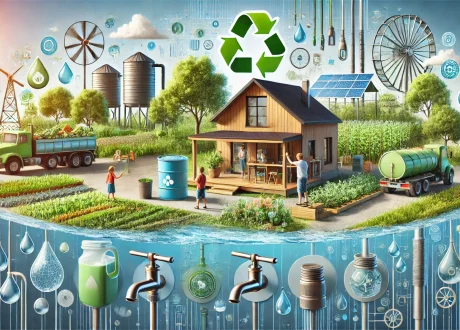
Water Conservation: 7 Simple Ways to Save Water at Home and in Your Business
Water is one of our most precious resources, yet it is often wasted without thought. ...

About 18 new green shipping corridor initiatives emerged worldwide in the last year alone – a 40% increase in 2023 – and 1/3 of existing initiatives made significant, measurable progress in the past year, according to the “Annual Progress Report on Green Shipping Corridors 2024”, published by the Getting to Zero Coalition and the Global Maritime Forum.
Green shipping corridors – specific trade routes where the feasibility of zero-emission shipping is catalyzed by public and private action – have rapidly expanded in popularity worldwide, but progress could stall without urgent action from governments to overcome a “feasibility wall.”
The report highlighted major growth in the number of initiatives, increasing by 40% in 2023 to a total of 62 initiatives globally. Alongside this considerable expansion, a third of the existing corridors have advanced to a new phase of exploration, including feasibility studies, implementation roadmaps, and cost assessments. Six frontrunning initiatives are now preparing for real-world implementation, establishing blueprints for green corridors worldwide.
However, initiatives risk hitting a “feasibility wall” if the cost of transitioning to sustainable energy sources is not urgently addressed by national policy incentives. This lack of national policy to bridge fuel costs is now the number one bottleneck and will soon limit the development of green corridors. The report calls on national governments to step up support and help unlock the business case for alternative energy, such as hydrogen-based fuels.
“Green shipping corridors have an essential role to play in accelerating zero-emission shipping. This year saw a handful of advanced corridors setting the pace, but continued progress is not inevitable. If industry and national governments make a concerted effort to share the costs and risks associated with new fuels, these leading corridors could together generate a breakthrough for zero-emission shipping before 2030,” said Jesse Fahnestock, Director of Decarbonization at the Global Maritime Forum.
The concept of green corridors was established in November 2021 as a critical way to scale new sustainable fuels and technologies. In particular, they are central to delivering the goal of having zero-emission fuels account for 5% of all fuels by 2030. The 5% target is considered the threshold at which the infrastructure, supply chains, and technologies that support zero-emission fuels are mature enough to enable exponential growth. If green corridors fail to continue advancing, the 5% target is at risk, potentially jeopardizing the industry’s entire 2050 net-zero goal. With shipping providing the backbone for global trade, failing to meet the sector’s decarbonization targets could have significant implications for Scope 3 emissions reductions across all sectors.
The report makes clear that the development of green corridors can help governments reach their hydrogen ambitions by providing an early and sizeable source of demand. Just the six frontrunning initiatives alone could require over two million tons of hydrogen-based fuel per year by 2030. With an increased number of governments focusing on incentivizing the adoption of hydrogen in multiple sectors, providing shipping-specific support could catalyze both national hydrogen economies and the decarbonization of the maritime sector.
اترك تعليقا